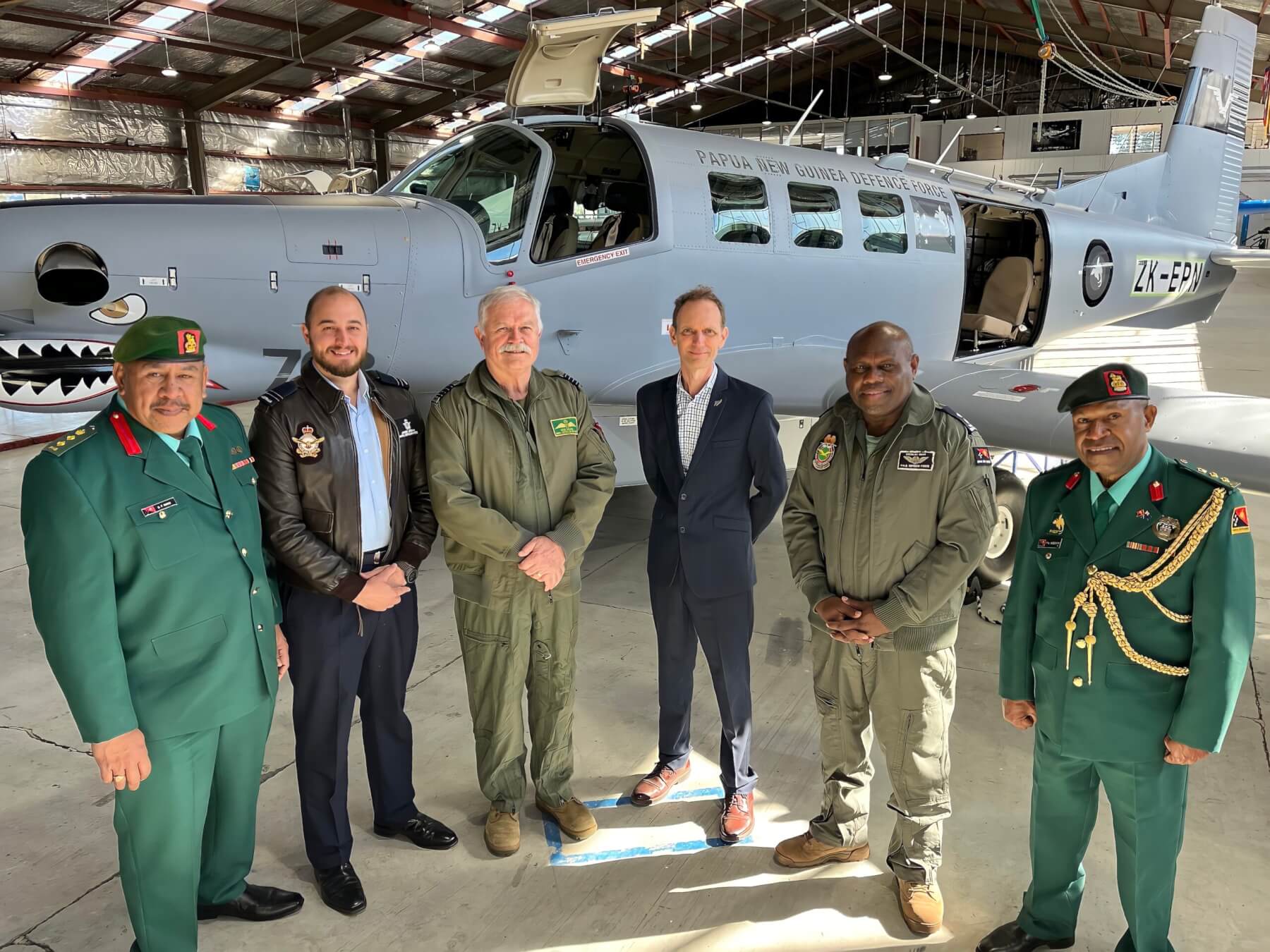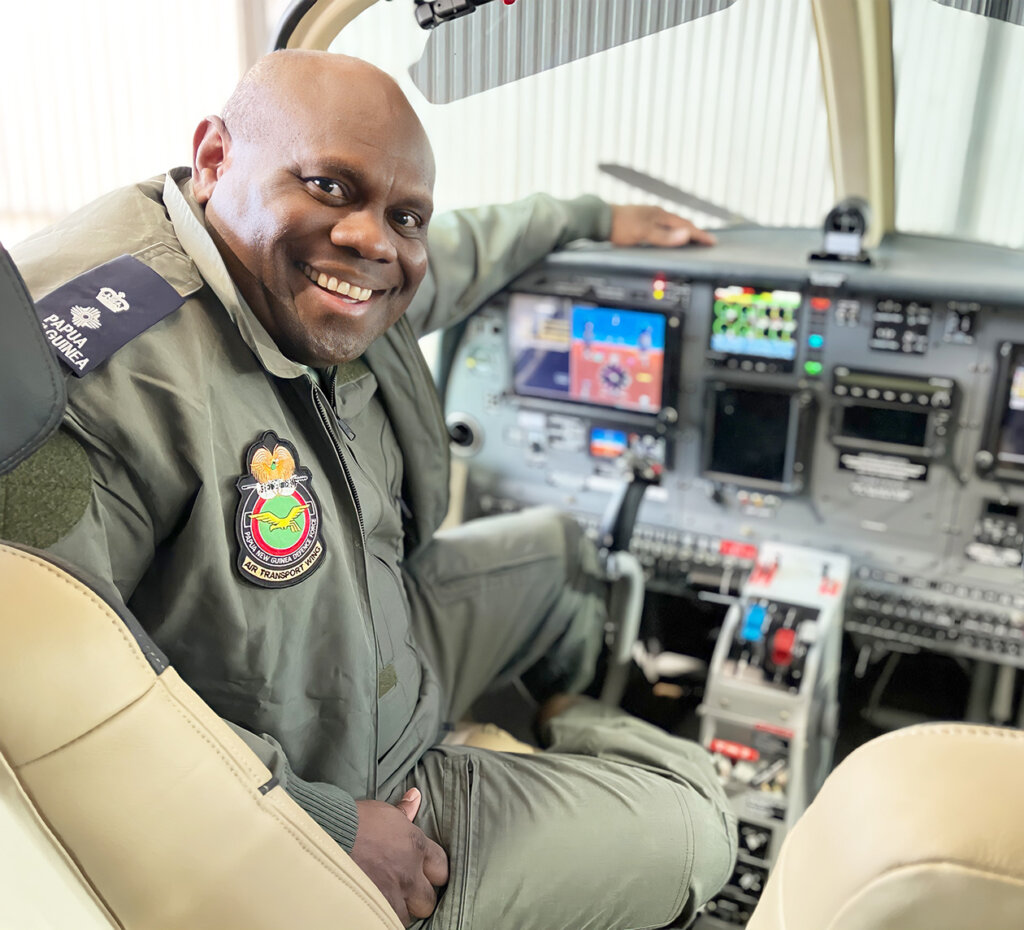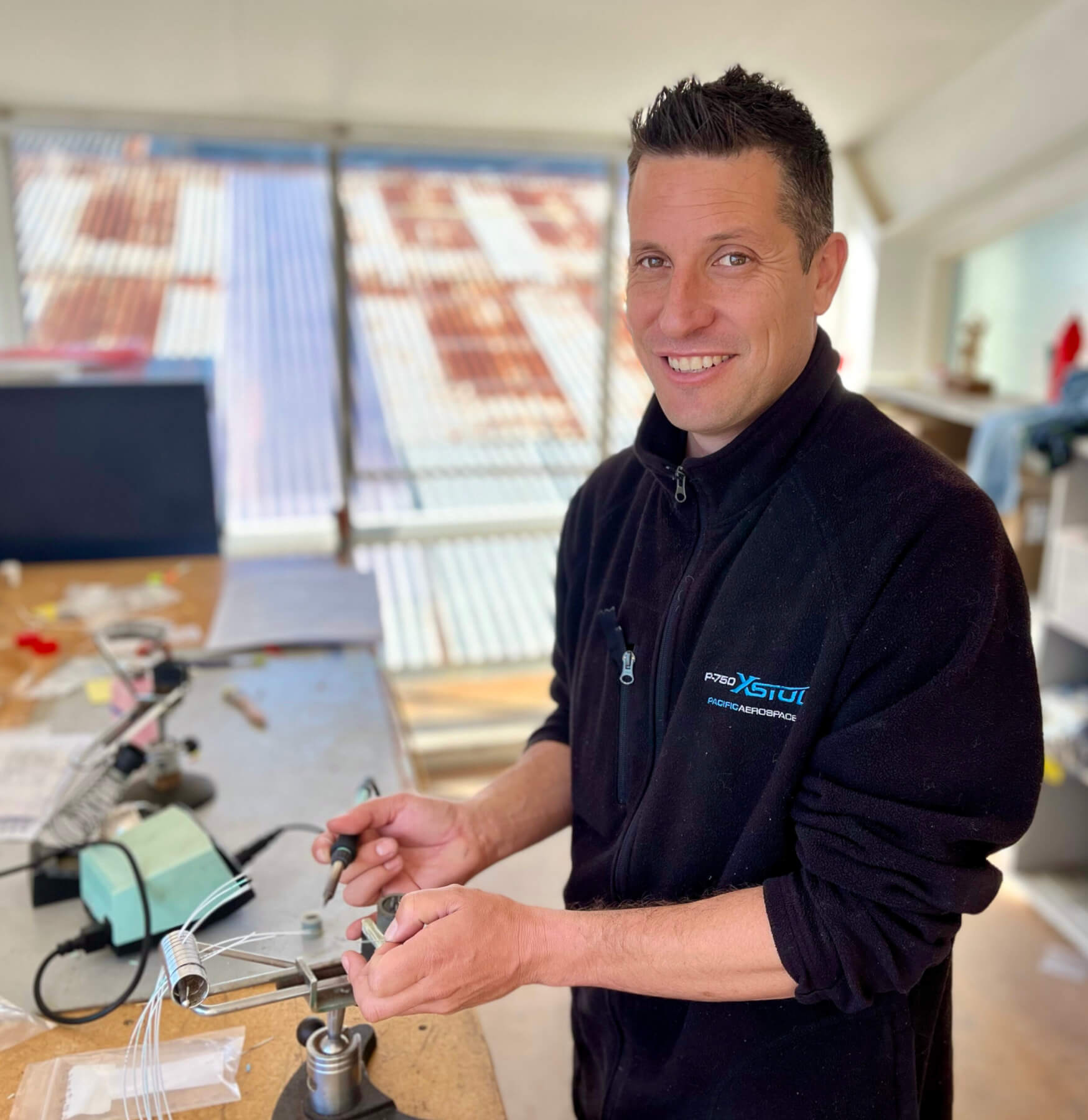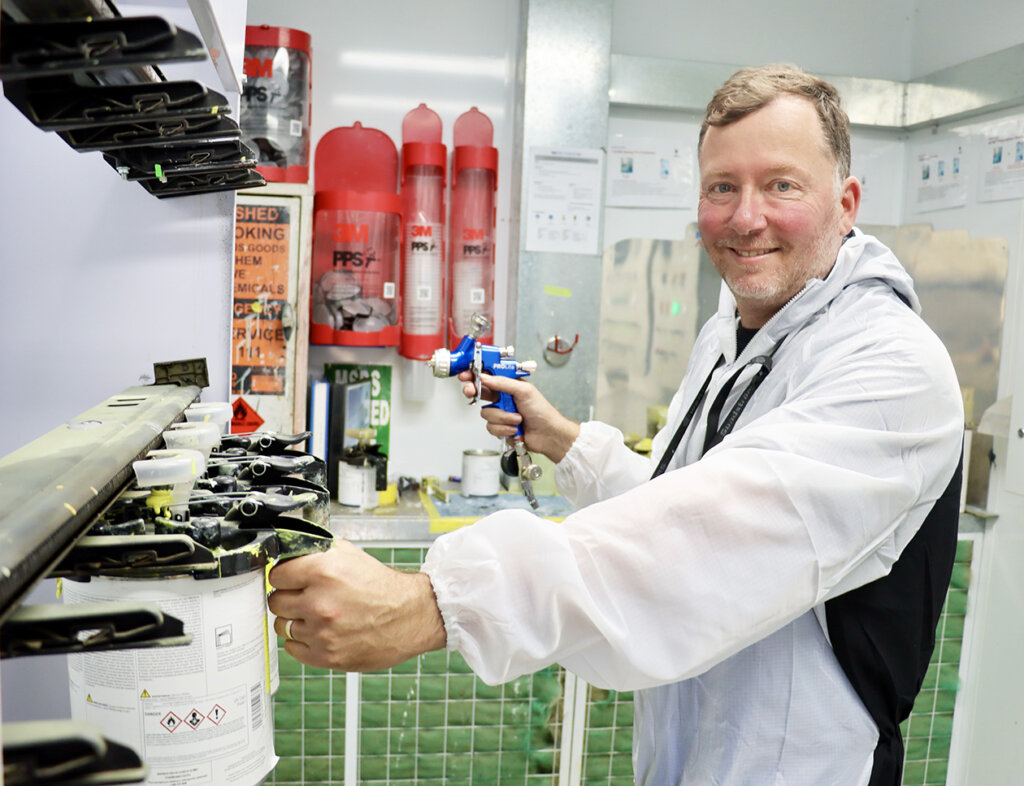
Pictured with the new PAC 750XL is from left, Canberra-based Papua New Guinea Defence Force Attaché, or advisor, to Australia, Colonel Siale Diro, flight lieutenant James Brennan, Group Captain Stephen Fielder, representing the Commonwealth of Australia, NZSkydive chief Stephen Burrows, PNG Defence Force air capability officer lieutenant colonel Douglas Vavar and PNG Defence Force defence adviser Colonel Tony Aseavu.
The second of two aircraft purpose built in Waipā specifically to bolster the Papua New Guinea Defence Force will be in nation’s skies before the end of the month.
The latest aircraft completed at Hamilton Airport-based NZSkydive – a PAC 750XL utility aircraft overseen to a large degree by staff from both Cambridge and Te Awamutu – passed a return test flight with “flying colours” last Friday, before being handed over to representatives of its new owners, the Papua New Guinea Defence Force (PNGDF).
It is one of just 30 fixed wing aircraft manufacturers and NZSkydive staff who worked on the aircraft watched as it was gifted as part of a strategic partnership between the Australian Defence Force and their Papua New Guinea counterparts.
The initiative includes joint training and capacity building activities, aviation safety and maintenance.
The two PAC 750XL were purchased by the Commonwealth of Australia and gifted to Papua New Guinea – they’re also the first two aircraft completed at NZSkydive since it began manufacturing on the former Pacific Aerospace site last March.
The PAC 750XL was first designed on the current NZSkydive site in Hamilton 20 years ago – and more than 120 have been built since.
Once in Papua New Guinea, the newest PAC 750XL will carry personnel, freight, undertake supply and personnel drops and be part of a pilot and maintenance training fleet, enabling the PNGDF to increase its operational capabilities.
Canberra-based PNGDF Attaché, or advisor, to Australia, Colonel Siale Diro, and PNGDF defence adviser Tony Aseavu accepted the newest PAC 750XL from the Commonwealth of Australia, represented by Australia’s PNG Sovereign Air Capability programme director, group Captain Stephen Fielder, at a ceremony last Friday.
Waikato District councillors Crystal Beavis and Mike Keir, Waipā District Pironga-Kakepuku Ward councillor Bruce Thomas and New Zealand Trade and Enterprise and Employers and Manufacturers Association representatives were also present.
NZSkydive owners Dee Bond and Neil Young also watched on.

Papua New Guinea (PNG) Defence Force air capability officer lieutenant colonel Douglas Vavar in the cockpit of the new PAC 750XL after being part of a test flight to Tauranga last Friday.
NZSkydive CEO Stephen Burrows said the company was proud to be part of last Friday’s handover.
The first of the two aircraft was gifted in March – with each build project representing roughly 12,000 man hours – about 24 weeks, he said.
“The two aircraft represent the start of a new era for the Papua New Guinea Defence Force,” Burrows said.
Returning from the aircraft’s test flight, Colonel Diro said it was a “fantastic day”.
About 80 percent of Papua New Guinea’s population, he said, live in rural areas with remote airstrips.
“We’re required to be able to access those in our population who live in those remote areas.”
Able to take off in 220m even when fully loaded, and land in just 166m, the Pac 750XL can also uplift more than its own weight.
“It’s capabilities and versatility like that which make it perfect for Papua New Guinea,” Colonel Diro said.
“NZSkydive is right up there with the best in the world. I’m amazed by the quality of work done here.”
Like father, like son
Lucas Cronin is NZSkydive’s production supervisor.
Many of the nearly 50 people employed by NZSkydive worked on the newest PAC750XL.
Key among them was Cambridge’s Lucas Cronin. He is now the production supervisor and most of his 14 years of industry experience has been in avionics, essentially an aircraft’s instrumentation.
Lucas’ father worked in the industry for more than four decades, and sparked his son’s initial interest.
The PAC 750XL’s main electrical loom alone takes three weeks to complete, Lucas said.
“It’s pretty special to reflect on how a raw material rolls in the front door and – ultimately – flies out the front. It’s a great industry.”
More than 700 aircraft have been manufactured on the NZSkydive site over a 70 years period and 400 still fly today.
It is planned to continue building five new aircraft on site annually.
Darren’s got it covered…
Darren Gibson spent about a month painting the new aircraft almost single handedly.
Many of the nearly 50 people employed by NZSkydive worked on the newest PAC750XL.
Key among them was Te Awamutu’s Darren Gibson, who commutes to work every day.
Gibson – who has almost 30 years’ painting experience – estimates he cumulatively spent roughly a month almost single handedly painting it in preparation for Friday.
“I used over 30 litres of top coat alone,” he said.
“I started out in the marine industry,” he said, adding there’s a “special process” necessary when painting planes.
“The standard is very high. Whatever part I’m painting, I give 100 percent. Knowing the completed plane is life changing for those who now own it is great.”










